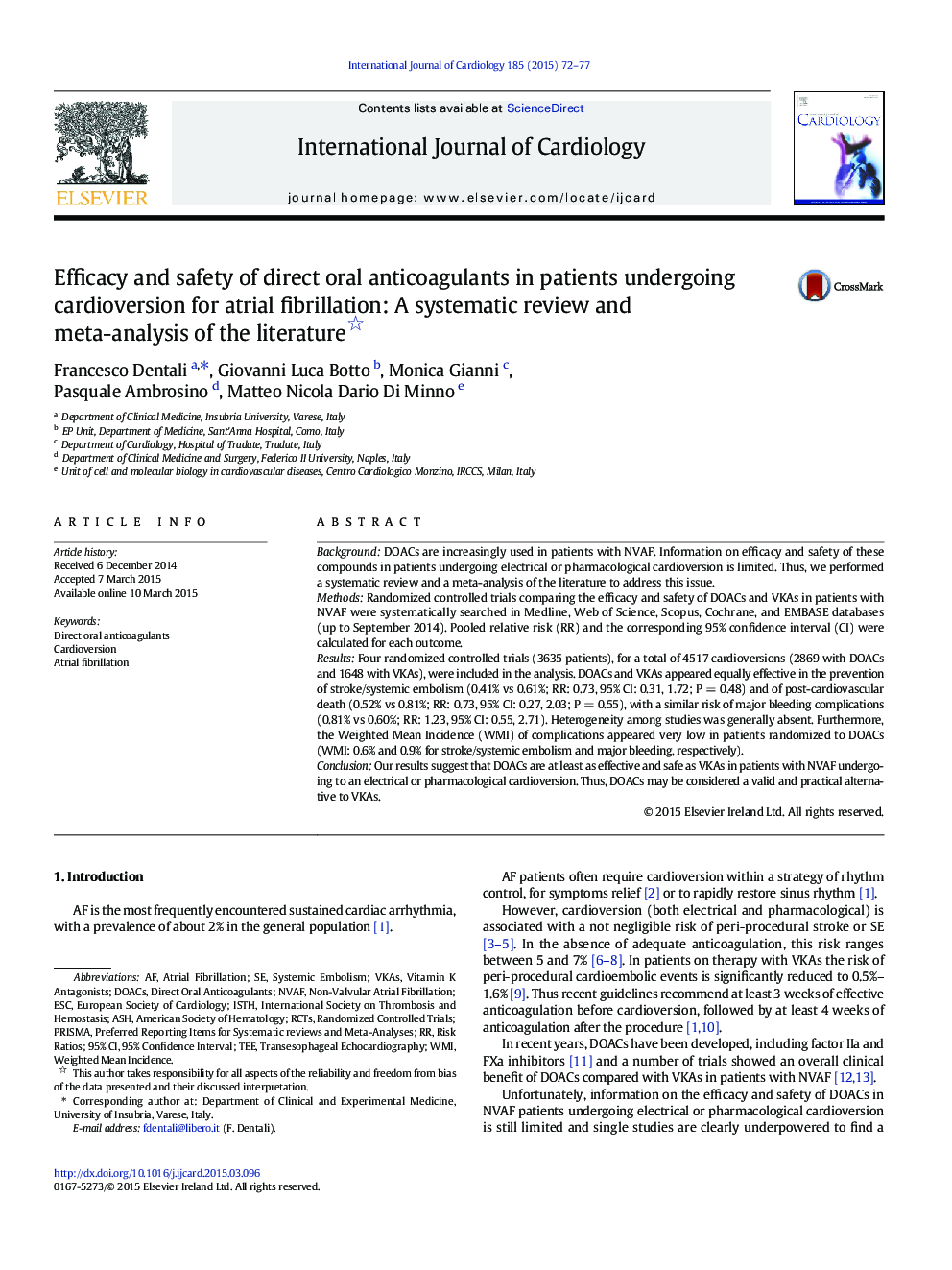| Article ID | Journal | Published Year | Pages | File Type |
|---|---|---|---|---|
| 2929112 | International Journal of Cardiology | 2015 | 6 Pages |
BackgroundDOACs are increasingly used in patients with NVAF. Information on efficacy and safety of these compounds in patients undergoing electrical or pharmacological cardioversion is limited. Thus, we performed a systematic review and a meta-analysis of the literature to address this issue.MethodsRandomized controlled trials comparing the efficacy and safety of DOACs and VKAs in patients with NVAF were systematically searched in Medline, Web of Science, Scopus, Cochrane, and EMBASE databases (up to September 2014). Pooled relative risk (RR) and the corresponding 95% confidence interval (CI) were calculated for each outcome.ResultsFour randomized controlled trials (3635 patients), for a total of 4517 cardioversions (2869 with DOACs and 1648 with VKAs), were included in the analysis. DOACs and VKAs appeared equally effective in the prevention of stroke/systemic embolism (0.41% vs 0.61%; RR: 0.73, 95% CI: 0.31, 1.72; P = 0.48) and of post-cardiovascular death (0.52% vs 0.81%; RR: 0.73, 95% CI: 0.27, 2.03; P = 0.55), with a similar risk of major bleeding complications (0.81% vs 0.60%; RR: 1.23, 95% CI: 0.55, 2.71). Heterogeneity among studies was generally absent. Furthermore, the Weighted Mean Incidence (WMI) of complications appeared very low in patients randomized to DOACs (WMI: 0.6% and 0.9% for stroke/systemic embolism and major bleeding, respectively).ConclusionOur results suggest that DOACs are at least as effective and safe as VKAs in patients with NVAF undergoing to an electrical or pharmacological cardioversion. Thus, DOACs may be considered a valid and practical alternative to VKAs.
